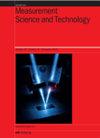基于深度学习的汽车粘土模型风噪预测研究
IF 3.4
3区 工程技术
Q1 ENGINEERING, MULTIDISCIPLINARY
引用次数: 0
摘要
分析和缓解高速条件下汽车的风噪声是噪声、振动和声振粗糙度(NVH)领域的一个重要问题。由于空气声学产生机制的复杂性,目前传统的风噪预测方法存在局限性。在气动声学风洞实验中,分别在 100 公里/小时、120 公里/小时和 140 公里/小时的车速条件下收集了来自驾驶员的侧窗振动数据和噪声数据。这些数据样本用于风噪声模型的训练和验证。同时,将这两种深度学习方法与反向传播神经网络(BPNN)、极限学习机(ELM)和支持向量回归(SVR)方法进行了比较。我们的研究结果表明,LSTM 风噪预测模型不仅具有更高的准确性,而且还表现出更强的泛化能力,从而证明了该方法的优越性。本文章由计算机程序翻译,如有差异,请以英文原文为准。
Deep Learning-Based Wind noise Prediction Study for Automotive Clay Model
Analyzing and mitigating wind noise in automobiles under high-speed conditions is a significant issue within the realm of Noise, Vibration, and Harshness (NVH). Due to the intricate nature of aeroacoustics generation mechanisms, current conventional methods for wind noise prediction have limitations. Hence, deep learning methods are introduced to investigate wind noise in the side window area of an automotive clay model.During aeroacoustic wind tunnel experiments, side window vibration data and noise data from the driver were collected under vehicle speed conditions of 100 km/h, 120 km/h, and 140 km/h, respectively. These data samples were obtained to be used for training and validation of the wind noise model. Convolutional Neural Networks (CNN) and Long Short-Term Memory Neural Network (LSTM) algorithms were separately employed to reveal the complex nonlinear relationship between wind noise and its influencing factors, leading to the establishment of a wind noise prediction model.Simultaneously, these two deep learning methods were compared with Backpropagation Neural Networks (BPNN), Extreme Learning Machines (ELM), and Support Vector Regression (SVR) methods. Our findings revealed that the LSTM wind noise prediction model not only exhibits higher accuracy but also demonstrates superior generalization capabilities, thereby substantiating the superiority of this method.
求助全文
通过发布文献求助,成功后即可免费获取论文全文。
去求助
来源期刊

Measurement Science and Technology
工程技术-工程:综合
CiteScore
4.30
自引率
16.70%
发文量
656
审稿时长
4.9 months
期刊介绍:
Measurement Science and Technology publishes articles on new measurement techniques and associated instrumentation. Papers that describe experiments must represent an advance in measurement science or measurement technique rather than the application of established experimental technique. Bearing in mind the multidisciplinary nature of the journal, authors must provide an introduction to their work that makes clear the novelty, significance, broader relevance of their work in a measurement context and relevance to the readership of Measurement Science and Technology. All submitted articles should contain consideration of the uncertainty, precision and/or accuracy of the measurements presented.
Subject coverage includes the theory, practice and application of measurement in physics, chemistry, engineering and the environmental and life sciences from inception to commercial exploitation. Publications in the journal should emphasize the novelty of reported methods, characterize them and demonstrate their performance using examples or applications.
 求助内容:
求助内容: 应助结果提醒方式:
应助结果提醒方式:


